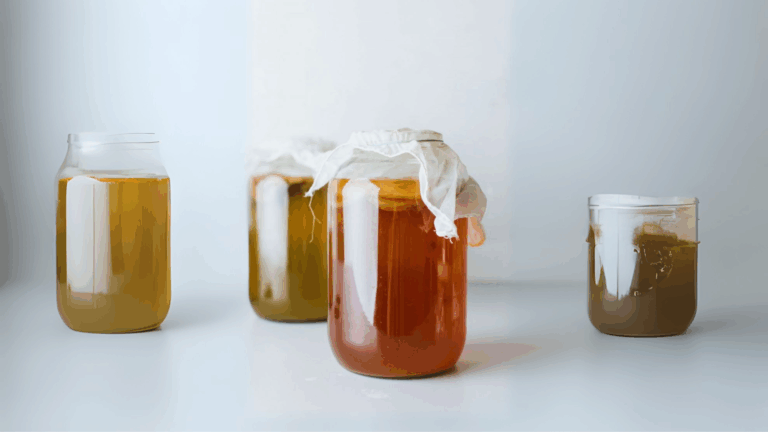Last weekend while frying some samosas, I caught myself reaching for the same pot of oil I had used three nights before. The oil looked a little darker but that alone was not going to stop me. I have reused cooking oil for as long as I can remember without any consequences albeit with some doubts if it was still okay to use. Like many people, it’s the most practical thing to do. It turns out this common kitchen dilemma of reuse versus wastage happens in restaurants too.
In commercial kitchens, food safety authorities often recommend reusing frying oil no more than three to four times depending on the type of oil and the frying temperature. Oils high in polyunsaturated fats like Sunflower oil Corn oil are usually discarded sooner, while stable fats like tallow can last longer. To comply with standards, many restaurants use oil testing kits or follow strict visual and sensory checks to decide when to replace their oil.
This tells us reusing cooking oil is possible, but the safety depends on the type of fat or oil, its stability under heat and how it’s handled. The more polyunsaturated, the faster it oxidizes and breaks down making it risky for multiple use.
Best Practices to Keep Frying Oil Clean for Reuse: How to Keep Your Deep-Frying Oil Clean.
- Strain After Each Use.
Once the oil cools, strain it through a fine mesh sieve lined with cheesecloth, a coffee filter or even a paper towel.
This removes burnt crumbs that make oil degrade and smoke faster.
- Avoid Mixing Foods.
Do not fry strong-flavored or bread crumbs coated foods in the same oil if you plan to reuse it.
Fish for example, will make the oil taste off for anything else.
- Control Frying Temperature.
Keep the oil in medium heat while frying, between 160°C–190°C (320°F–375°F).
When it’s too hot, the oil breaks down quickly while too low, the food soaks oil and leaves more residue.
- Don’t Salt Over the Oil.
Season food after frying, not while it’s in the oil. Salt and spices fall in, burn and dirty the oil the more.
- Skim During Frying.
Use a slotted spoon or skimmer, keep removing floating crumbs while you cook.
- Store the Oil Properly.
Once strained, pour the oil into a clean, dry, airtight glass jar or stainless-steel container. Keep the oil in a cool, dark place;not near the stove or window. For longer storage you may refrigerate it.
- Know the Limits.
Even with care, most oils can only be reused a few times depending on the type of food fried and the stability of the oil itself. Discard it as soon as you notice negative changes.
How Many Times Can You Reuse Different Oils?
Beef & Sheep Tallow: Mostly saturated therefore very stable to reuse three to four times. These animal fats hold up well under heat and their flavor stays fairly neutral.
Lard (pork fat): It is moderately stable, a mix of saturated and monounsaturated. You can give it two to three uses. Flavor can get stronger after the second use.
Duck Fat: It is high in monounsaturated fat, stable but less than tallow and you can reuse two to three times. Duck fat adds a rich flavor to your food which intensifies with reuse.
Avocado Oil: Mostly it is monounsaturated. It can be reused two to three times, it keeps your food tasting clean but nutrients like vitamin E decline with the reheating.
Olive Oil (extra virgin): It is monounsaturated with antioxidants. There’s a controversy on whether it should be used for cooking or dressing only because it looses it’s delicate flavor and antioxidants quickly. If used for cooking, best reused once or twice only.
Common Vegetable Oils: These include soybean, sunflower, corn, canola, grapeseed etc. They are high in polyunsaturated fats and oxidize fast which is why they are best used once only. Their repeated use affects flavor with stale, greasy taste and creates harmful compounds.
Indication That It’s Time to Discard Reused Cooking Oil.
Many of the cheap street eateries around the world may not use oil testing kits or even know of their existence, yet it is evident that many reuse oil for long periods. They offer tasty fried meals amongst other foods, but they too know when not to cross the food safety markers.
The legal reuse limit may not exist in some countries. However, the visual and sensory inspections are very reliable checks in discarding oil when it shows clear signs of degradation. This can be used both at domestic level, in institutions and commercial kitchens.
Stop using the oil if you notice any of these characteristics
Off smell: The oil starts to smell rancid, fishy or stale because fats have oxidized.
Colour changes: It gets darker, very noticeable especially after it cools down.
Foaming or bubbling: Oil produces bubbles on its own even without wet food, showing it has broken down.
Texture changes: The oil thickens,is sticky or has a gummy texture when cooled because of polymerized fats and burnt food particles. You might notice it sticks to the sides of the cooking pan too.
Early smoking point: When the oil is heated, you notice it smokes at lower temperatures than before, a sign that its structure is damaged. This is very common in informal street kitchens.
Food taste Changes: The food may taste bitter, metallic or simply unpleasant which means oxidized compounds are now transferring to your food.
Increased viscosity: The oil gets too thick or heavy and doesn’t flow easily, which means it has degraded and can no longer cook evenly.
Excess residue or crust: A heavy layer of burnt particles collects at the bottom of the pan, signaling the oil is spent.
Effects of Reusing Cooking Oil on Flavour and Nutrition
Flavour: With each reuse, oil absorbs flavors from previous foods. This can make new dishes taste greasy, heavy or off. Neutral oils lose freshness and animal fats can develop stronger, lingering flavors.
Nutrition: Heat and oxidation break down natural nutrients, like antioxidants and vitamin E. With repeated use, unstable oils form harmful byproducts such as aldehydes and trans fats, which are not healthy. Stable animal fats and avocado oil hold up better, but still lose some nutrients with each heating cycle.
Reusing cooking oil should always be done cautiously with close monitoring. Evidently, Avocado oil and animal fats like beef tallow and lard are the most stable hence safest for reuse because they resist oxidation and are better than most vegetable oils. Whenever you are in doubt, discard the oil to protect both your health and the flavor of your food.Discard oil when it smells, foams, smokes, foams, thickens or changes taste.
Remember that every reuse reduces both flavour quality and nutritional value.







